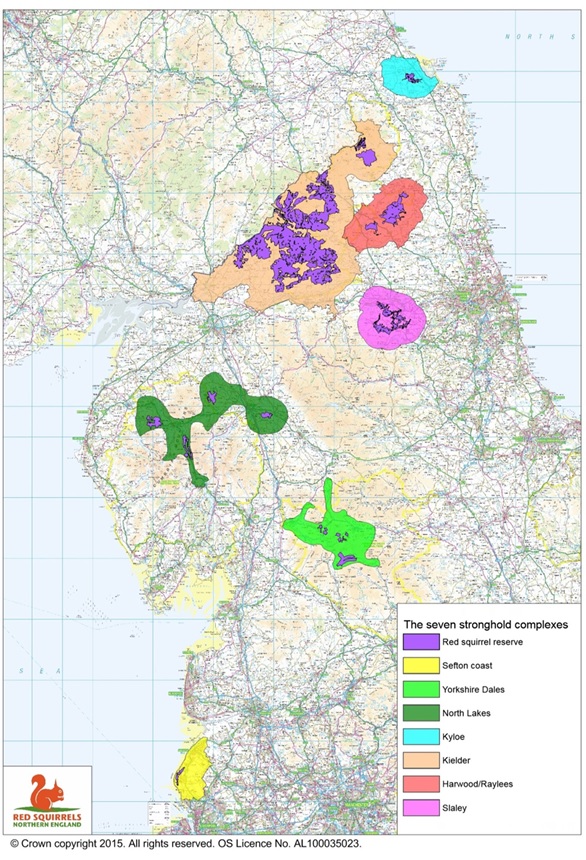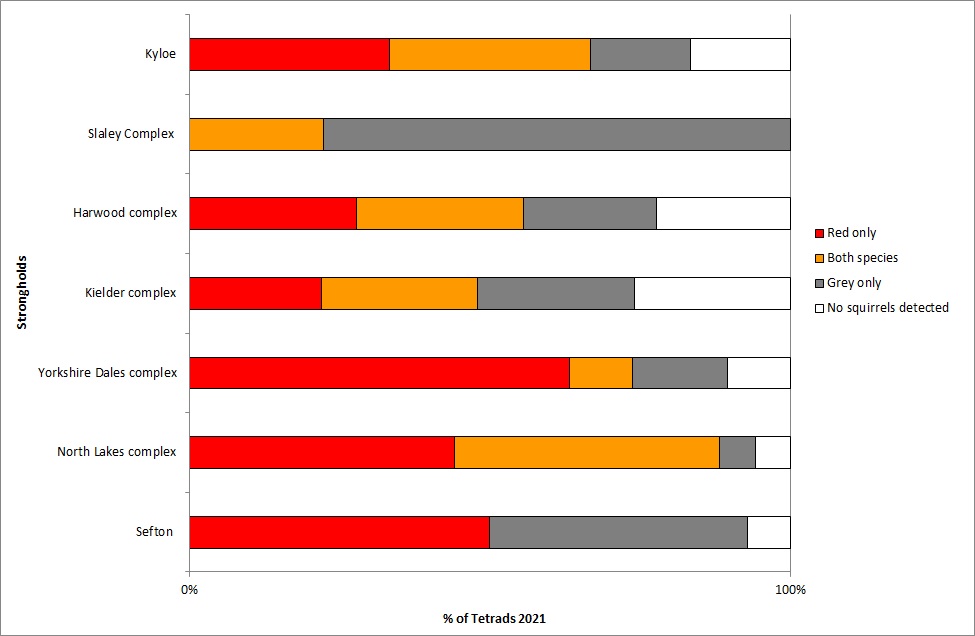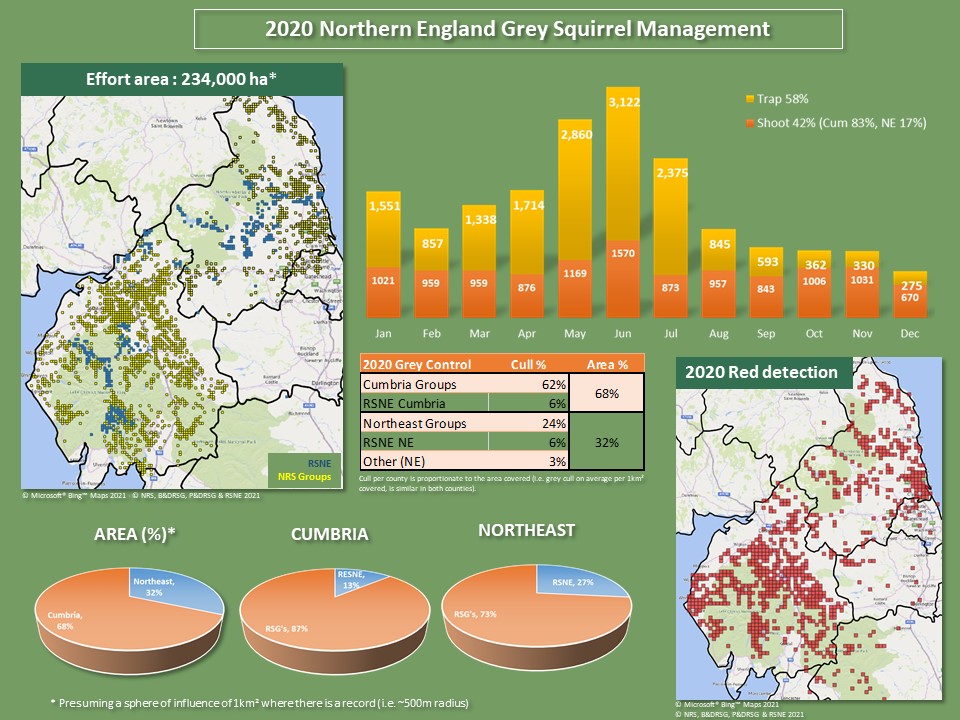Conservation and Strongholds
Red Squirrel Reserves and Strongholds
17 Large conifer forests in northern England were designated in 2005 to help provide a focus for red squirrel conservation. Each reserve is surrounded by a 5km area called a buffer zone (which help us to protect the reserve from approaching grey squirrels). Together these make up the “strongholds”. Government funding was made available via the English Woodland Grant Scheme to landowners, specifically in these areas. However, since 2014, and the launch of Countryside Stewardship through the new Rural Development Programme for England, funding has been made available for landowners and managers throughout the red squirrel range, recognising red squirrels as a priority species both inside and outside of these strongholds.

The 17 reserves are:
Northumberland – Kyloe, Uswayford, Kidland, Harwood, Raylees, Kielder, Dipton/Dukeshouse, Healey/Kellas, Slaley/Dukesfield;
Cumbria – Greystoke, Whinfell, Whinlatter, Thirlmere, Garsdale/Mallerstang;
North Yorkshire – Greenfield, Widdale;
Merseyside – Sefton.

Our red squirrel conservation strategy now focuses on protecting red squirrel populations in these strongholds, by working with a range of partners to control grey squirrels within and beyond these stronghold forests. We monitor the impact of this control work, adapting our control activity in response.
This work complements the enormous effort being made by volunteer groups and private landowners throughout northern England, which amounts to 85%+ of the total effort. These endeavours are contributing to the maintenance of the red squirrel range in England…not just in these stronghold areas, but across a much wider landscape.

This approach was developed following years of research by leading scientists in the field, looking at areas where it was felt red squirrels had the best chance of long-term survival, based on criteria such as current strength of red populations, absence of grey squirrels, isolation of woodlands (thus reducing the opportunities for grey squirrels to move in and become established) and potential for a landscape-scale conservation effort. The same approach was adopted in parts of Scotland and Wales.
